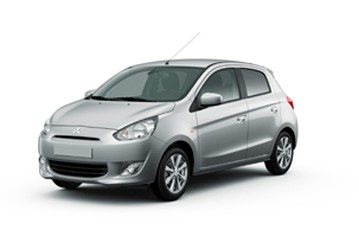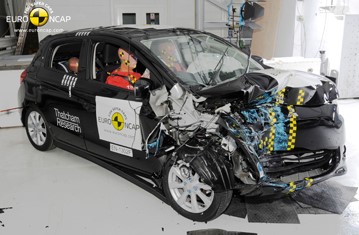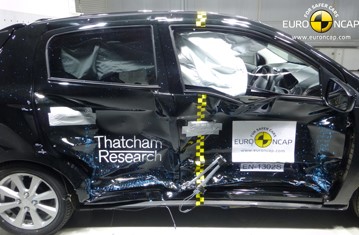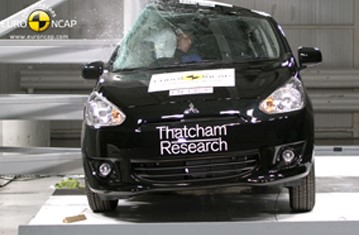Find more information in the General Comments section of the assessment
Find more information in the Rating Validity tab of the assessment
- See More
- See More
- See More
- See More
- Good
- Adequate
- Marginal
- Weak
- Poor
 Passenger
Passenger
 Driver
Driver
 Front Seat
Front Seat
 Car
Car
 Pole
Pole
- Good
- Adequate
- Marginal
- Weak
- Poor


Passenger
outboard
Fitted to the vehicle as standard
Not fitted to the test vehicle but available as option
Not Available
-
Infants up to 13 kg
-
Infants and toddlers up to 18 kg
-
Toddlers from 9 to 18 kg
-
Toddlers over 18 kg
Easy
Difficult
Safety critical
Not allowed
| Seat Position | ||||
|---|---|---|---|---|
| Front | 2nd row | |||
| Passenger | Left | center | Right | |
| Maxi Cosi Cabriofix (Belt) | ||||
| Britax Römer King Plus (Belt) | ||||
| Britax Römer Duo Plus (ISOFIX) | ||||
| Britax Römer KidFix (Belt) | ||||
| Maxi Cosi Cabriofix & EasyFix (Belt) | ||||
| Maxi Cosi Cabriofix & EasyFix (ISOFIX) | ||||
| BeSafe iZi Kid X3 ISOfix (ISOFIX) | ||||
| Maxi Cosi Pearl & Familyfix (ISOFIX) | ||||
| Britax Römer KidFix (ISOFIX) | ||||
Easy
Difficult
Safety critical
Not allowed
Both dummies were sat in forward-facing seats. In the frontal impact, forward movement of the head of each dummy was not excessive and protection was rated as good. However, chest deceleration in the 1½ year dummy indicated that protection of this area was fair. In the side impact, both dummies were properly contained by their restraints, minimising the likelihood of dangerous head contact with parts of the car interior. The passenger airbag can be disabled to allow a rearward-facing child restraint to be used in that seating position. However, information provided to the driver regarding the status of the airbag was unclear and the system was not rewarded. The group II/III child restraints could not be properly installed in the rear outboard seats. Otherwise, the restraints for which the car is designed could be installed without any problem. Cars sold before 1st September 2013 may differ in the information provided in the user handbook about how to fit the group II/III seat in the front passenger seat. According to Euro NCAP's protocols, such cars would have scored less in the assessment of child restraint installation.
- Good
- Adequate
- Marginal
- Weak
- Poor

Head Impact 16.5 Pts
Pelvis Impact 3.8 Pts
Leg Impact 6.0 Pts
The bumper scored maximum points for its protection of pedestrians' legs, with good results in all areas tested. The front edge of the bonnet showed marginal protection of the pelvis in most test locations. The bonnet surface provided predominantly good or adequate protection to the head of a struck pedestrian.
- Good
- Adequate
- Marginal
- Weak
- Poor
| System Name | ASC | |
| Performance | ||
| Vehicle Yaw Rate @ COS + 1.00 s | 3.7% | meets ECE requirements |
| Vehicle Yaw Rate @ COS + 1.75 s | 1.151% | meets ECE requirements |
| Lateral Displacement @ BOS + 1.07 s | 3.03 m | meets ECE requirements |
| Applies To | Front seats | ||
| Warning | Driver Seat | Front Passenger(s) | Rear Passenger(s) |
| Visual | |||
| Audible | |||
|
|||
Electronic stability control is standard equipment and met Euro NCAP's test requirements. The front seats are equipped as standard with a seatbelt reminder system. There is no such system on the rear seats and the Space Star/Mirage does not have a speed limitation device.
- Specifications
- Safety Equipment
- Videos
- Rating Validity
Specifications
Tested Model Mitsubishi Mirage 1.2, RHD
Body Type - 5 door hatchback
Year Of Publication 2013
Kerb Weight 860kg
VIN From Which Rating Applies - Cars from 1st September 2013
Class City and Supermini
Safety Equipment
Note: Other equipment may be available on the vehicle but was not considered in the test year.
Fitted to the vehicle as standard
Fitted to the vehicle as option
Not fitted to the test vehicle but available as option
Not Available
Not Applicable
Videos
Rating Validity








Find more information in the General Comments section of the assessment
 Share
Share









The passenger compartment remained stable in the frontal impact. Dummy readings indicated good protection of the knees and femurs of both driver and passenger. Mitsubishi showed that a similar level of protection would be provided to occupants of different sizes and to those sat in different positions. However, dummy readings from the driver's tibia indicated a marginal level of protection for this area. In the side barrier test, the Space Star/Mirage scored maximum points, with good protection of all body areas. Even in the more severe side pole test, protection of the chest was adequate and that of other body regions was good. The seat and head restraint provided good protection against whiplash injuries in the event of a rear-end collision.